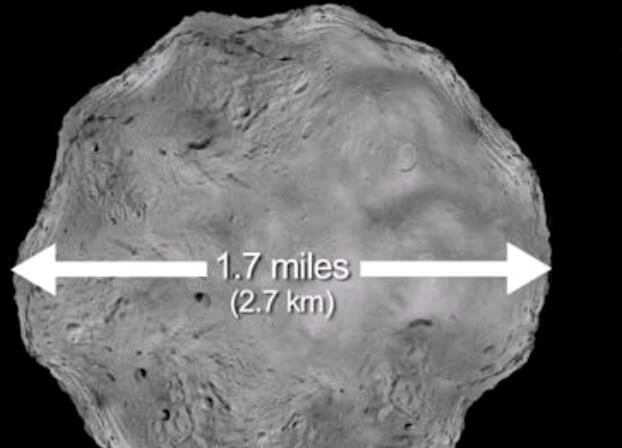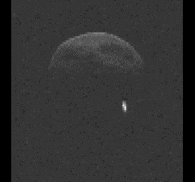Again the topic is making headlines. Another asteroid visits the Earth-Moon system. This time it is a carbonaceous asteroid, which may contain organic molecules such as amino acids

Asteroids have been a hot topic since February 15 this year (2013) when a small asteroid exploded over Russia and another, larger asteroid, 2012 DA14 broke the record for the closest asteroids to Earth on the same day.
This time it is asteroid 1998 QE2, an asteroid that is on the list of near-Earth objects that may endanger it. Its diameter is 2.7 kilometers. Astronomers are preparing to study the space rock when it passes safely this time on May 31.
The approach is expected to occur at 23:59 Israel time on the night between Friday and Saturday, as mentioned at a distance that will not endanger us. The asteroid was discovered on August 19, 1998 by the LINEAR Automated Near-Earth Object Observatory of the Massachusetts Institute of Technology.
Yesterday, a radar image from the Goldstone Radar Observatory revealed that the diameter of the small moon of the approaching asteroid, which was initially estimated to be about 600 meters, is only 200 meters. The Deep Space Network in Goldstone, California photographed the asteroid when it was about 6 million kilometers from Earth - 15.6 times the distance to the Moon.
"This is a large asteroid that is going to provide us with one of the best radar targets of the year," says Lance Benner of NASA's Jet Propulsion Laboratory in California.
"As my old friend, radar astronomer Steve Ostrow, used to say, the Eretz spacecraft is about to make a close approach flight to an asteroid, so we are going to use our radar capabilities to understand the object as much as possible."
At the point of approach, today (May 31, 2013), the asteroid will reach a distance of 5.8 million kilometers from the Earth or about 15 times the distance of the Moon from us. "Within such a range, the two large radio telescopes - Goldstone and Arecibo may be able to identify many details about the asteroid 1998 QE2" says Benner. "The radar map may compete with images of other asteroids taken during spacecraft approach to them."
One of the things that bothers Benner is the dark color of the asteroid. According to measurements made by the Spitzer Space Telescope, 1998 QE2 reflects only 6% of the sunlight falling on it, making it dark as coal. "In an interesting coincidence, it has a similar composition to asteroid Bennu (101955 Bennu), the target of the Osiris Rex mission." added
The spacecraft, scheduled for launch in 2016, will fly to the near-Earth asteroid Banu, circle it and finally bring back a soil sample for research in a laboratory on Earth. The Beno asteroid interests researchers for two reasons: first, it is a carbon-rich asteroid that may also contain amino acids and other organic molecules that were essential to the early Earth. Second, it is a type of asteroid that NASA might be able to capture. In fact, the Osiris Rex mission is considered an essential part of NASA's program to locate, explore and reposition an asteroid for research by astronauts.

1998 QE2 may provide researchers with a taste of that fascinating space rock.
Although the asteroid is expected to pass the point of approach today, the best time to watch it will be in early June when the asteroid will enter the northern sky. At that time its bright side will face Earth, making it an easy target for amateur telescopes at maximum magnitude 4 on June 3, when it is expected to shine as a star at magnitude 11.
While the amateur astronauts will watch the space rock slide through the Nebula and Ophiuchus groups, NASA's radars will focus on it with the greatest possible intensity, revealing a view of another world that no one has seen before.
ScienceCast video explaining the passage of the large near-Earth object 1998 QE2
For information about the observations conducted to identify the size of the asteroid's moon on the NASA website
for information about the approach
